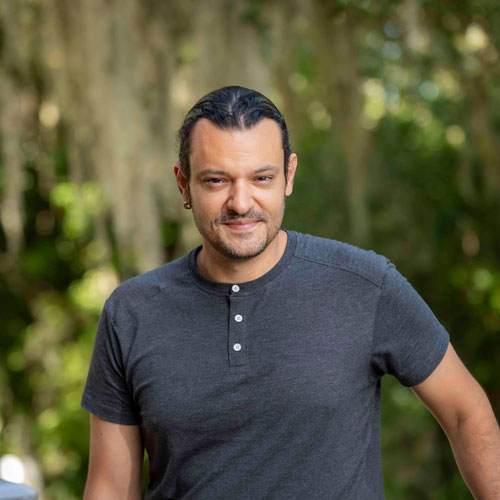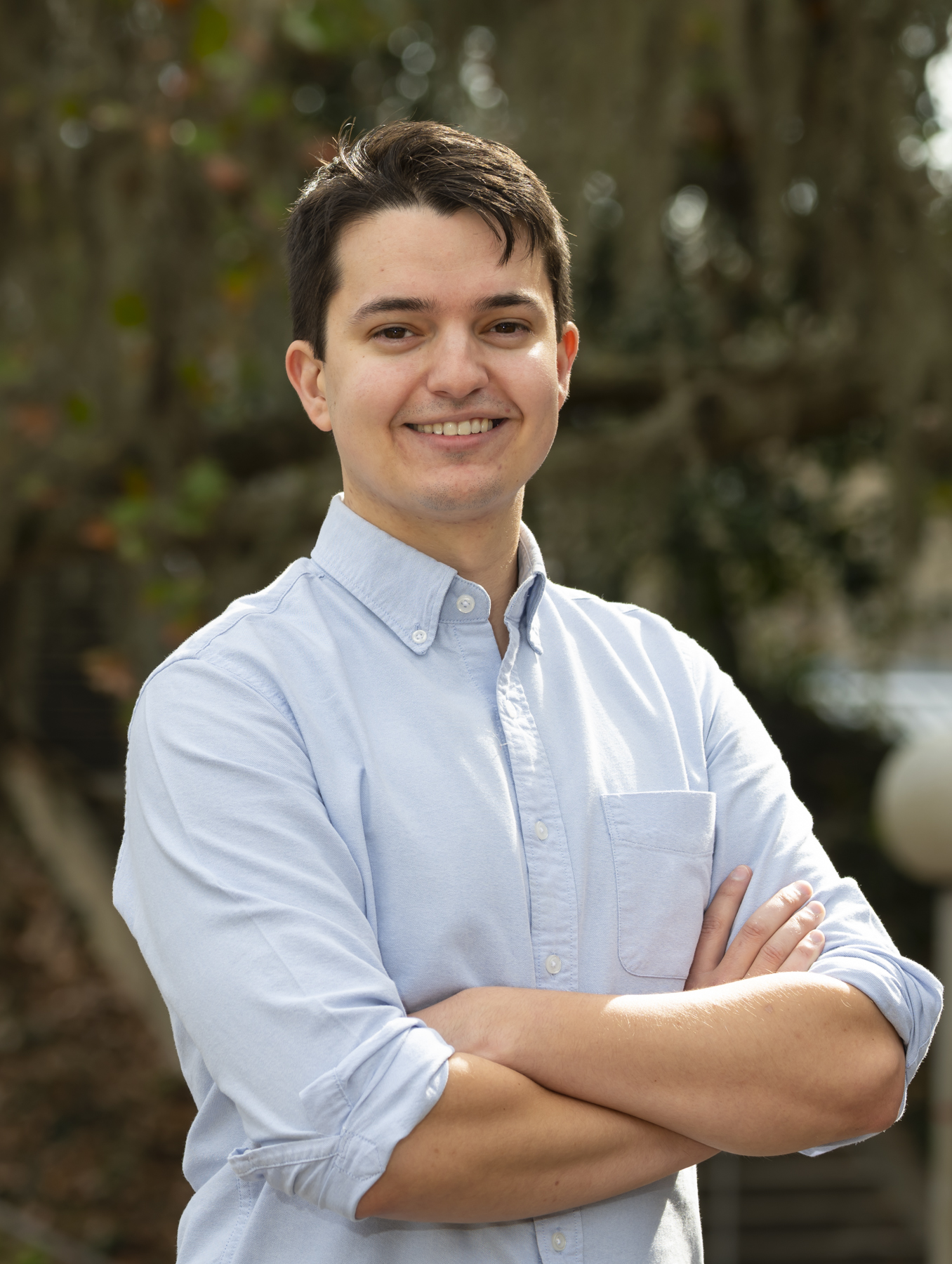Innovative curators at UF are using AI tools to elevate museum collections
Breakthroughs in artificial intelligence are radically reshaping the way humans analyze and ingest information. To keep pace with these changes, the Florida Museum of Natural History at the University of Florida – home to more than 40 million specimens and artifacts, and one of the nation’s largest natural history collections – recently created the first curatorial positions for AI.
Rather than managing a collection for organisms like plants or birds, as most curators do, the museum’s new AI curators are tasked with developing machine learning tools to study specimens in ways that were previously impractical or impossible.
AI offers new ways to study and monitor biodiversity
In fields of biology focused on human health, scientists have used a type of AI called deep learning to scour endless reams of DNA in order to spot mutations, predict the three-dimensional structure of proteins, discover new therapeutic drugs, and make clinical diagnoses. Deep learning models have also found their way into the biodiversity sciences, where they have accelerated and exponentially increased the value of natural history specimens and cultural heritage objects.

With this in mind, Arthur Porto, Ph.D., was hired as the Florida Museum’s curator of AI for natural history and biodiversity last year. He spent the first half of his career developing the technology that helped make jobs like this possible.
While working toward a bachelor’s degree in biology at the University of São Paulo, Porto used what was considered advanced technology at the time to create digital reconstructions of mammal skulls.
“I used a mechanical arm, which held a pen and kept track of its position relative to the arm’s base,” Porto said. “You had to take the pen, place it on the specimen in different positions, and press a button for a computer to record the three-dimensional coordinates.”
By comparing the same skull features across multiple species, Porto could make inferences about how animals evolved. But the process of placing landmarks to create a 3D representation was laborious and expensive. Porto had to take the robotic arm with him to each museum that housed a skull he wanted to measure, which severely hampered the amount of work he could accomplish for his degree.
By the time he earned his doctoral degree a few years later, museums had begun using computed tomography scanners to create 3D specimen reconstructions. This was an immeasurable improvement to the disembodied arm approach, but anyone hoping to use these digital replicas for comparative research still needed to place landmarks on all the 3D models they wanted to study. So Porto created a program called ALPACA that automated the process.
“Now, instead of having to manually measure hundreds of specimens, you can measure, let’s say, four and use them as templates,” Porto said. “The landmarks on those templates are automatically fitted to any other specimen you want to measure.”
This was not the first program Porto created to scale up the acquisition of data. For his second postdoctoral fellowship, he joined a lab in Norway that was trying to crack an evolutionary mystery called the “paradox of stasis.”
Whenever a population of organisms is faced with a change in the environment, there are only two options: adapt or die. Natural history is replete with instances of the latter – species that could not keep up and went extinct – but there have also been winners that were able to successfully change in response to external forces. The records of those that survived prove organisms can evolve quickly, yet on the vast scale of geologic time, the change is fairly slow.
To study this problem, Porto needed to look at organisms with an exceptional fossil record, and bryozoans (marine invertebrates) fit the bill.
“You can literally go to a fossil site and dig up millions of them in a short period of time,” Porto said.
Previous fossil studies seemed to confirm that bryozoans adhered to a mode of punctuated equilibrium, evolving in short bursts and then settling down for eons of stasis. Porto wanted to take another look, but processing the fossils using traditional methods would have required countless hours of mind-numbingly meticulous work.
An electron micrograph of a single bryozoan — a marine animal that lives in colonies — can contain hundreds of structures that only a trained expert can identify. And, according to his estimates, Porto would have needed to work roughly 200 eight-hour days to complete this task.
Repetitious pattern matching, while arduous for humans, is no problem for machine learning tools. Porto developed a program called Deep Bryo that could do the work for him in a fraction of the time. Instead of taking 200 days, the program collected the data in one hour.
This type of machine learning, called computer vision, has been widely adopted by the medical community to help make diagnoses, but its potential is only just being recognized in evolutionary biology. Similar to the ongoing revolution in genomics – the study of an organism’s full complement of DNA – Porto thinks biology is on the cusp of a similar revolution in phenomics, in which images are used to study the sum total of an organism’s physical traits.
“Now we can collect image data much faster than we can process it,” said Porto, who is currently recruiting graduate students with a background in biology or computer science to study in his lab. “The big focus of my lab is method development, creating new approaches to study organisms, including methods where you’re not just asking for specific things that you want from the data but also trying to interpret how the models are learning.”
Archaeologists use AI to search for historical patterns
Prior to Porto’s appointment, Nicolas Gauthier, Ph.D., joined the Florida Museum as the first curator of AI in 2022. He had spent more than a decade studying the cultural history of ancient civilizations, examining how people interacted with their environments and each other over long periods of time. But he does not consider himself a traditional archaeologist.

“I don’t really go into the field but I’m someone who knows that data and can work with it,” Gauthier said. “My goal with my research is to take archaeological data, translate it, and make it useful to people in multiple disciplines.”
The process of translating data and concepts across fields of science, and the interdisciplinary collaborations that have formed as a result, have led Gauthier to research old problems using new technology.
“I don’t focus on a specific culture,” Gauthier said. “Instead, I try to get up to speed with a new dataset or time period or culture as quickly as possible.”
Gauthier has studied everything from Mediterranean hunter-gatherers at the tail end of the Pleistocene through the advent of farming, to the disruptive effects wrought by a changing climate on indigenous communities in the American Southwest.
In each case, Gauthier has looked for parallels that run through vast spans of time and space. The solutions to the modern issues of sustainability, environmental stewardship, and climate change, he said, lie mirrored in the ways human ancestors dealt with the same problems.
“People’s default notion is that the past was very different – that, if you don’t have wheels or electricity, there’s no connection we can draw,” Gauthier said. “But time and again, if you go back to cases in which people wrote things down, the parallels are eerily similar.”
This peculiar tendency for patterns to repeat themselves is not restricted to periods of time. An entire field of science called complexity theory deals with the ways in which patterns repeat across scales of size and seemingly unrelated subject matters. These unifying patterns are precisely what make AI – which, at its core, looks for simple patterns in complex data – such a powerful tool for understanding the natural world.
For any given study, Gauthier analyzes data by borrowing models from disparate fields, ranging from the natural sciences to national security. While attempting to reconstruct trade networks of prehistoric communities in the American Southwest, he analyzed more than 4 million ceramic artifacts spread out across hundreds of archaeological sites. To make sense of this data, Gauthier constructed a model stitched together from equations that describe gene flow, the hierarchies within terrorist networks, and recommendation algorithms used in the entertainment industry.
“All of these methods are very similar; it’s just that people use different words to describe them,” Gauthier said.
Given his background, the Florida Museum was a natural place for Gauthier to further develop machine learning methods that would increase the value and utility of the collections. Not only is AI well-suited for digging out patterns in messy data, but it can also extend those patterns across glaring gaps that make wider inferences about particular time periods and cultures particularly challenging.
“With archaeological data and museum collections, you have this excellent, fine-grained window, like a single archaeological site,” Gauthier said. “But scaling that up to understand entire regions or entire histories of people is difficult. That’s where AI methods come in handy; they allow you to fill in the gaps in our knowledge much more easily.”
Gauthier was recently awarded a grant from the National Science Foundation to study how human activity in the Mediterranean has altered the region’s biodiversity through time.
He is also the recipient of a National Science Foundation grant to create a predictive model of disease outbreaks using historical data from the bubonic plague. Down the road, Gauthier sees endless opportunities for leveraging AI to reconstruct histories and past climates using natural history collections.
“That’s what really attracted me to the museum,” Gauthier said. “These collections are a shared language that we can use to really break down disciplinary boundaries and limitations on how we think about the world.”
